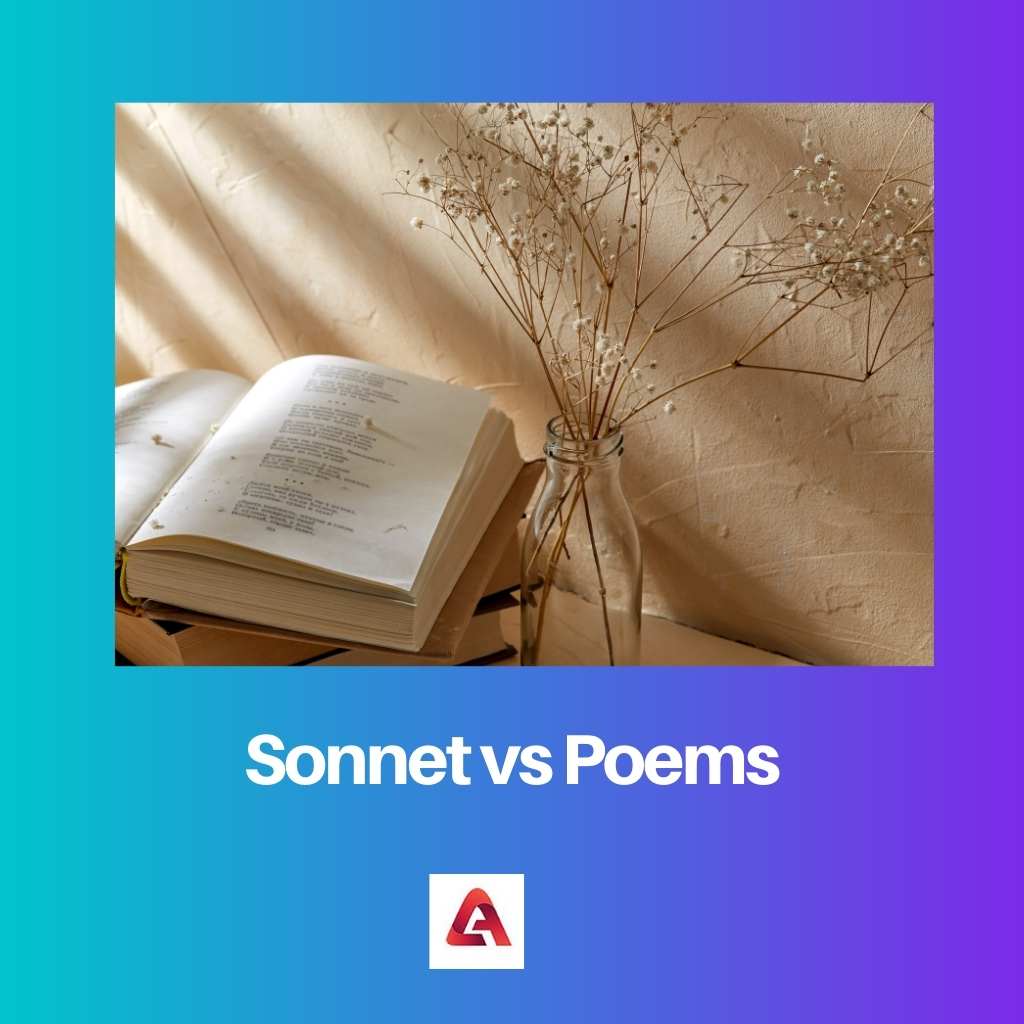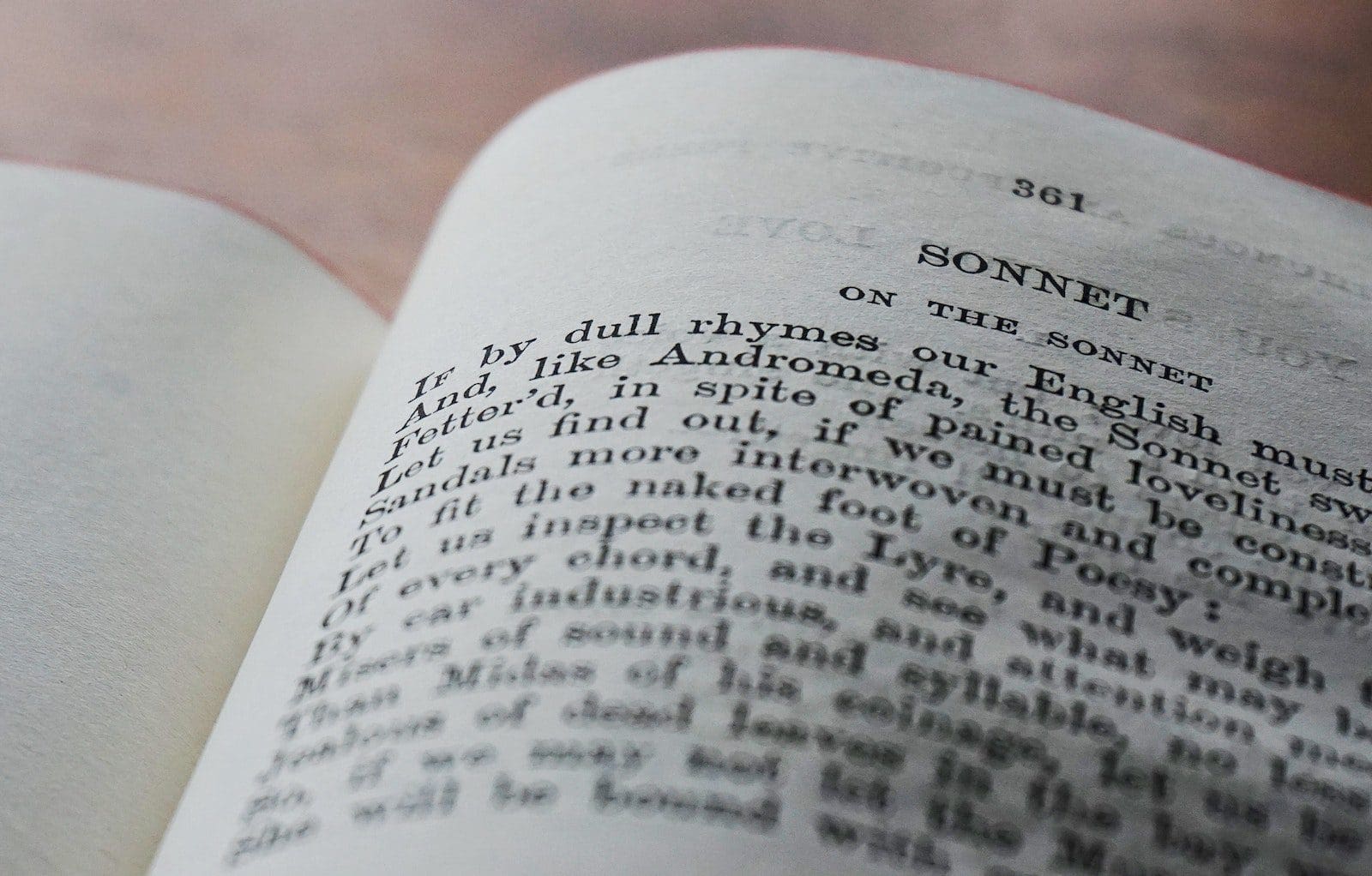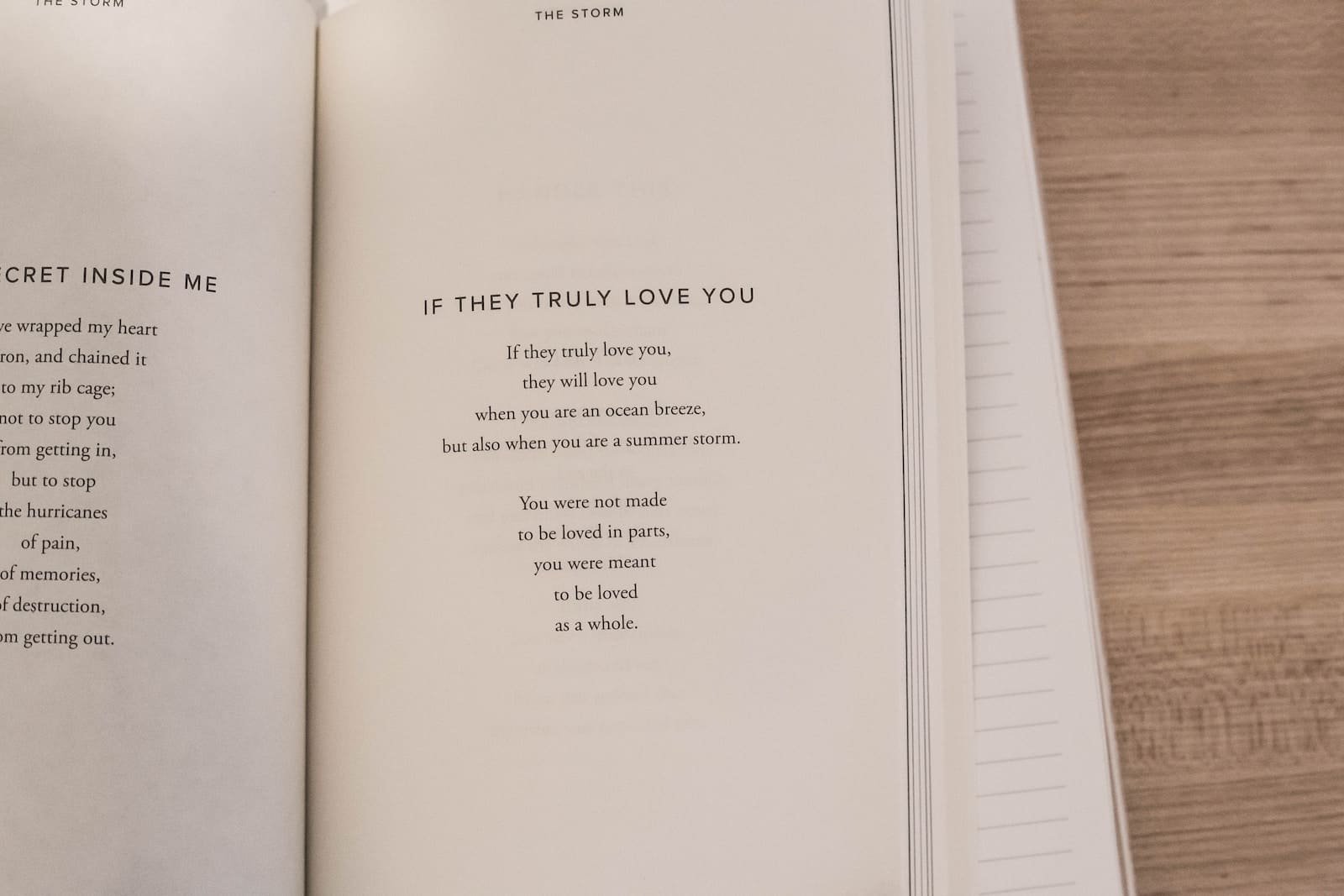Curtal Sonnet, Terza Rima Sonnet, Miltonic Sonnet, Spenserian Sonnet, Shakespearean Sonnet, and Italian Sonnet are some of the different forms of sonnets written in the English language.
Odes, limericks, narratives, couplets, villanelles, elegy, sestinas, haiku, sonnets, and ballads are all examples of free verse poetry. Sonnets are a type of poem that is divided into sections. A subset of the poem is sonnets.
Key Takeaways
- Sonnets are a specific type of poem with a strict structure consisting of 14 lines, while poems encompass a broad range of forms and styles.
- Sonnets follow a specific rhyme scheme and meter, whereas poems can have various rhyme schemes and meters or none.
- Sonnets traditionally explore themes of love and beauty, while poems can address various topics and emotions.
Sonnet vs Poems
The difference between Sonnet and Poems is that a sonnet is fourteen-line poetry. It can have any formal rhyme scheme. The phrase “Sonnet” comes from the Italian word “Sonetto,” which means “Little song.” Whereas a poem is a form of literature in which thoughts and feelings are portrayed via the use of imagery, rhythm, rhyme, and special direction. The word “poem” comes from a Greek word that means “to compose or make.”

Sonnets must be written in a precise format. Sonnets cannot be written if the structure is obstructed. The amount of lines in which sonnets must be written is predetermined. There are only fourteen lines in the structure here.
Curtal Sonnet, Terza Rima Sonnet, Miltonic Sonnet, Spenserian Sonnet, Shakespearean Sonnet, and Italian Sonnet are all varieties of sonnets in the English language. Lambic pentameter is the rhyming pattern that is carefully observed in Sonnets. Sonnets are a subset of a collection of poems.
Poems are not structured in any way. Poems are any written works that follow a set of guidelines. The amount of lines in a poem isn’t set in stone. In contrast to sonnets, a poem can have any number of lines.
In the English language, there are many different kinds of poems. Free verse, ode, limerick, narrative, couplelet, villanelle, elegy, sestina, haiku, sonnet, and ballad are some of the types of poetry.
Different metrical patterns are used in the rhyming patterns of various genres of poems. The poem is a collection of sonnets.
Comparison Table
| Parameters of Comparison | Sonnet | Poems |
|---|---|---|
| Lines | Fourteen | Not specific |
| Structure | Specific structure | No specific structure |
| Origin | Italian word | Greek word |
| Rhyming pattern | Lambic Pentameter | Various Metrical patterns |
| Types | Terza Rima Sonnet, Miltonic Sonnet, and Spenserian Sonnet | Free verse, ode, and limerick |
What is Sonnet?
Lambic pentameter is the rhyming pattern that is carefully observed in the case of Sonnets. Sonnets are a subset of a larger collection of poems.
Curtal Sonnet, Terza Rima Sonnet, Miltonic Sonnet, Spenserian Sonnet, Shakespearean Sonnet, and Italian Sonnet are examples of sonnets in the English language.
Sonnets have a precise structure that must be followed when writing them. Sonnets cannot be written if the framework is hampered. There is a set number of lines in which the sonnets must be written. In this form, there are only fourteen lines.
A sonnet is a type of poem that has fourteen lines in total. Any type of formal rhyming scheme can be used. The phrase “Sonnet” comes from the Italian word “Sonetto,” which means “little song.”

What are Poems?
In the English language, there are many different sorts of poems. Free verse, ode, limerick, narrative, couplet, villanelle, elegy, sestina, haiku, sonnet, and ballad are some of the types of poetry.
Different metrical patterns are used to follow the rhyming pattern in various sorts of poems. Poems don’t have any kind of organization or structure at all. Poems are anything that is composed while adhering to particular guidelines.
There is no set number of lines in which a poem must be written. Unlike sonnets, a poem can have any number of lines. The poem is a subset of a larger series of sonnets.
Poems are works of writing in which ideas and sentiments are represented via the use of imagery, rhythm, rhyme, and unique direction. The term “poetry” comes from the Greek word “poem,” which means “to compose or make.”

Main Differences Between Sonnet and Poems
- Sonnet is a type of poem which consists of a total of fourteen lines. It can be of any type of formal rhyme scheme. On the other hand, the poem is a type of literature in which ideas and feelings are expressed where there is a perfect use of imagery, rhythm, rhyme, and special direction.
- The term “Sonnet” has been originated from the term “Sonetto”, which is an Italian word meaning “Little song”. On the other hand, the term “Poem” has been originated from the term “poem”, which is a Greek word meaning “to compose or make”.
- Sonnets possess a specific structure in which they have to be written. If the structure is hindered, Sonnets cannot be made. On the other hand, poems do not possess any type of structure or specific structure. Anything which is written taken into consideration, certain rules are called poems.
- The number of lines in which the sonnets need to be written is fixed. Here, only fourteen lines exist in the structure. On the other hand, the number of lines in which a poem is written is not fixed. A poem can be of any line, unlike sonnets.
- There are various types of sonnets in the English language, which are Curtal Sonnet, Terza Rima Sonnet, Miltonic Sonnet, Spenserian Sonnet, Shakespearean Sonnet, and Italian Sonnet. On the other hand, there are various types of poems in the English language. Free verse, ode, limerick, narrative, couplet, villanelle, elegy, sestina, haiku, sonnet, and ballad.
- The rhyming pattern that is strictly followed in the case of Sonnets is called lambic pentameter. On the other hand, the rhyming pattern that is followed in the case of various types of poems is different metrical patterns.
- Sonnets are a subset that belongs to a set of poems. On the other hand, the poem is a set that consists of sonnets as a subset.

- https://www.cambridge.org/core/journals/pmla/article/parole-identiche-in-the-sonnet-and-other-verse-forms/9AD3A991E3BD8F268E2B0187B8D30B17
- https://muse.jhu.edu/article/433526/summary
